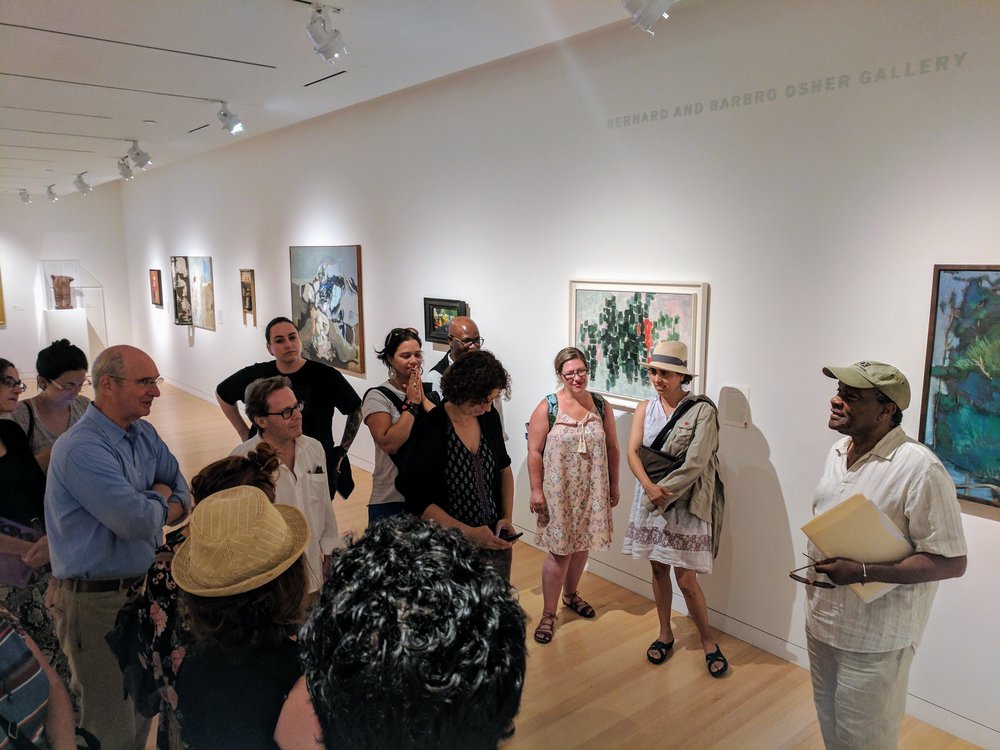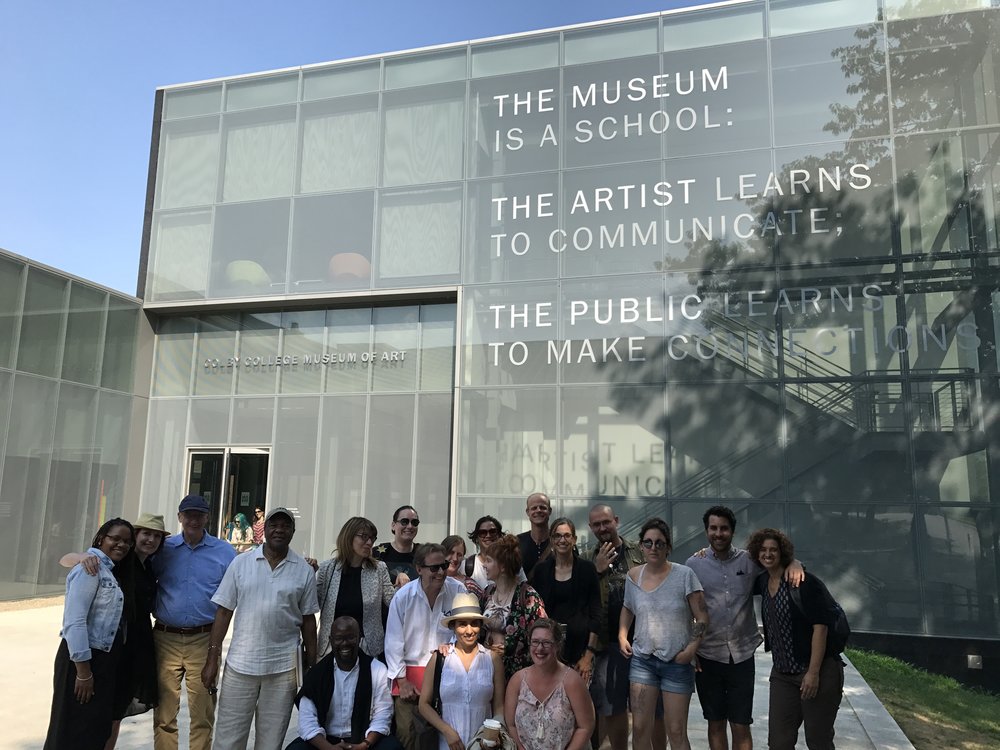I'm Working on The Building: Dr. David Driskell and the Black Aesthetic
November 14, 2017
by Zoma Wallace
I'm working on the building
It's a true foundation
I'm holding up the blood-stained
Banner for my lord
Well I never get tired, tired, tired of working on the building
I'm going up to heaven to get my reward
-Anonymous, Negro Spiritual
A single repeating stanza, composed of only six lines, constitutes an enduring song of faithful optimism. From B.B. King to Elvis Presley, these lines first sung among enslaved African Americans have been re-imagined by modern lyric poets and re-delivered to new ears in service of the eternal human project. What is such a project? What is the work that gives form to this building?
Becoming.

In his July lecture delivered to cohort ’15 at Colby College, Dr. David Driskell shared these lyrics and their metaphors of building/becoming in relation to the notion of a Black Aesthetic in American art. Dr. Driskell is a builder. He built his home and studio in Falmouth, Maine. He has built renowned collections of fine art and an institution for the study of visual arts and culture of African Americans and the African Diaspora. In his talk, he shared his perspective on an “artistic union...that was Black from within”, built through syntheses using the memory of experiences as an energetic source.
To begin, he referenced two major exhibitions as points of departure to consider the existence of an identifiable aesthetic grounded in African American experience: The Color Line presented in Paris at Musée du quai Branly, and Tate Modern's Soul of a Nation in London. The two address lines of racial demarcation drawn to facilitate discriminatory practice and the agency of artistic expressions created within their contexts. Lines of segregation set conditions for oppressive persecution, but unintentionally incubated demands for self-determination within Black American communities, as well. Art recorded this experiential journey and imagined alternative realities.
However one cannot and should not search for a “definable consistency” to act as a visual signpost to distinguish Black Art. He warned that one should not expect consistency because artists are “free souls.” They are builders assigned to a limitless project. And what is often referred to as a Black Aesthetic is instead what Dr. Driskell describes as a “self-imposed ethos”. This ethos has helped artists build bridges between the concepts of equality, equity, justice and the labor to attain them. “Art is the dream of the real...what we hope will be, not always what is. Art is the connecting link to that which we know we need and do not have in the physical world.” With this thought, he reminded us of another building project, imagined by Plato, “striving towards the realm of perfection through orderly pursuit.” Although Plato would prefer to expel artists and others from this realm than embrace them, the notion of ‘striving’ as an ongoing, unfinishable effort is the takeaway. Ideals may never be attainable in full, and absolutes may never be definable, but the journey towards them is valuable. And it will be art that continues to build and trace this journey of human becoming.

